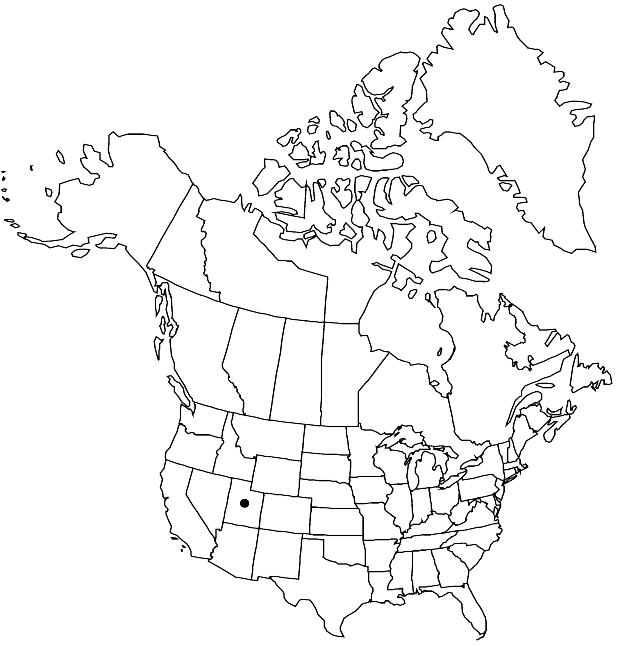Thelypodiopsis divaricata
Great Basin Naturalist 37: 355. 1978.
Annuals or biennials; pubescent proximally, glabrate distally. Stems usually branched distally, rarely unbranched, 2–8.5 (–10) dm, (often densely pubescent proximally, trichomes flat, crisped). Basal leaves (soon withered); not rosulate; blade oblong, 2–10 cm × 10–30 mm, margins entire or dentate, (surfaces glabrous or sparsely pubescent). Cauline leaves sessile; blade (proximalmost) oblong or (distal) oblong to ovate, base auriculate to amplexicaul, margins usually entire or dentate (rarely dentate distally). Racemes dense. Fruiting pedicels divaricate-ascending to spreading, straight, (slender), 6.5–14 (–21) mm, (glabrous or pubescent). Flowers: sepals (calyx often urceolate), erect, yellowish, 3.5–5.5 × 1.5–2 mm, (sparsely pubescent); petals yellow, oblong, 6.5–9 (–10) × 1–1.7 mm, (margins crisped), claw 3.5–5 mm (to 2 mm wide); median filament pairs 4–5 mm; anthers linear, 2.5–3.5 mm; gynophore (stout), 0.5–1.5 mm. Fruits suberect to divaricate-ascending or spreading, straight, slightly torulose, 4–8 (–9.5) cm × 1.2–1.7 mm; (valves sparsely pubescent at least when immature); ovules 70–94 per ovary; style subclavate, 0.7–2 mm; stigma 2-lobed. Seeds 1–1.7 × 0.7–1 mm. 2n = 22.
Phenology: Flowering Apr–Jun.
Habitat: Rocky knolls, sandy or clay grounds in juniper and shrub communities
Elevation: 1200-2100 m
Discussion
Thelypodiopsis divaricata is known from Carbon, Emery, Garfield, Grand, Kane, San Juan, and Wayne counties.
Selected References
None.
Lower Taxa
"elongated" is not a number."thick" is not a number."dm" is not declared as a valid unit of measurement for this property."dm" is not declared as a valid unit of measurement for this property.
